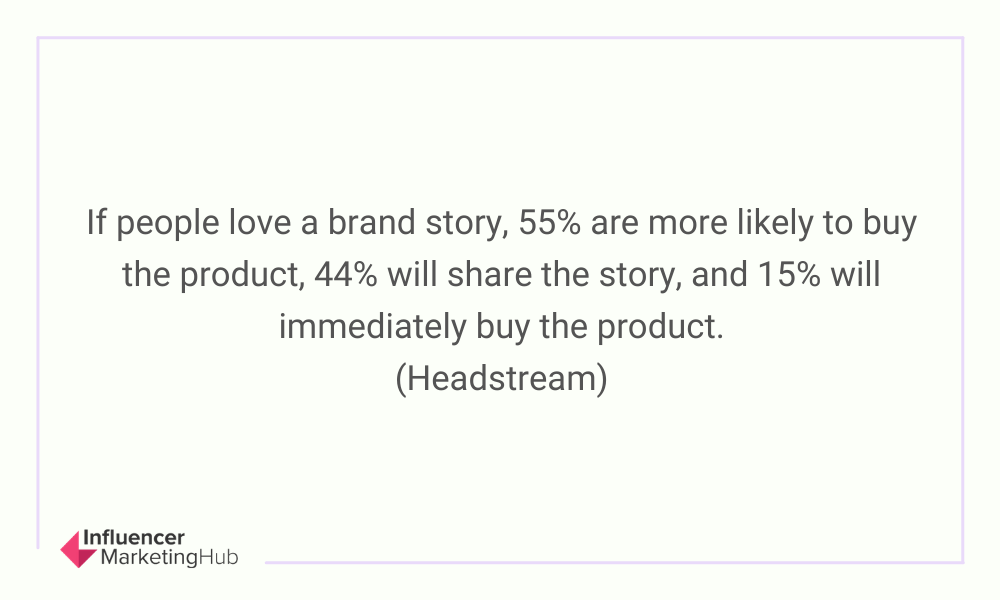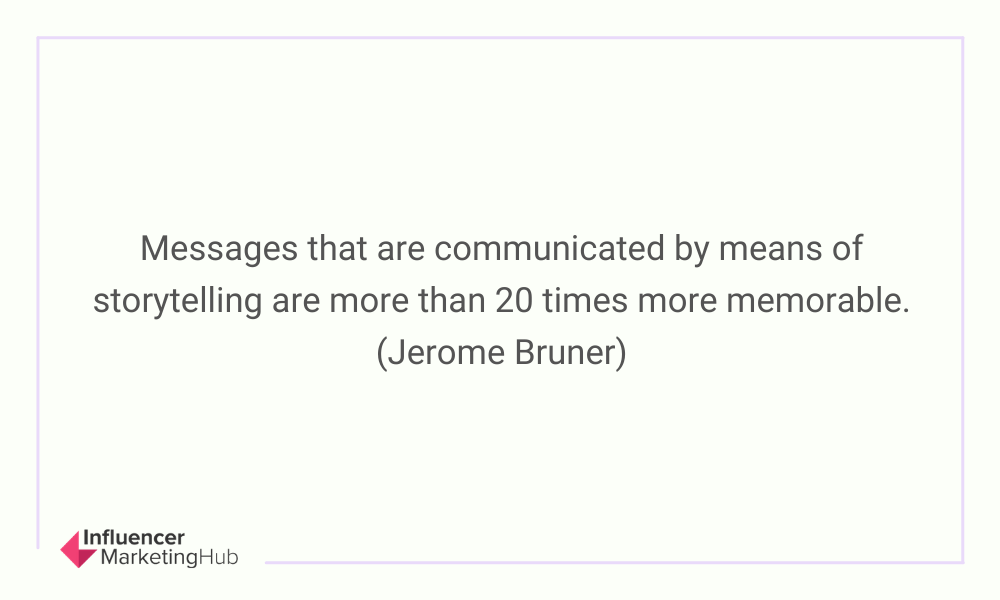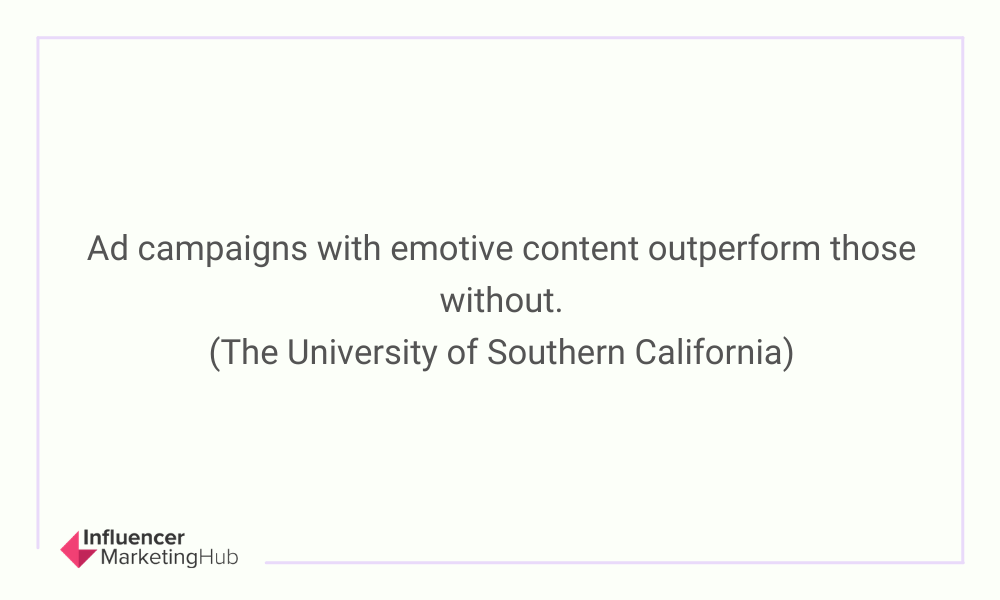If you thought that storytelling was reserved only for around the campfire, you would be very much mistaken. While storytelling is far from new, it is emerging as one of the most popular marketing strategies and forms a key element of impactful digital marketing campaigns.
In this article, we make a long story short and summarize the essentials you need to know to write a compelling story. Whether you prefer a blog post over Instagram Stories, there is a marketing channel for every brand to help them get their message across.
The Story Behind Storytelling in Marketing:
What Is Storytelling?

When marketers use storytelling, they use the story format to explain the key message to their target audience. The story they narrate can be completely factual or include additional details that might be untrue to help explain it better or make it more interesting. With the help of evocative language and highlighting the values that the brand and target audience have in common, storytelling helps to instill empathy, grab your attention and urge readers to complete the call to action. Ultimately, it helps brands to connect better with their target audience.
What Is the Difference Between Storytelling and Content Marketing?
Typically, content marketing concentrates on aspects like the features and specifications of your products or the services you offer. Storytelling instead focuses on the reason your products or services exist; telling the story of how your product can solve an issue, what drove you to establish the business, or why your customers enjoy your offerings.
Why Is It So Powerful?

While the internet makes it a lot simpler to interact with your target audience, the competition is intense. As a result, it makes it more difficult for your marketing campaigns to be successful. Storytelling is that secret sauce that can help you to cut through the noise of promotional messages.
With the help of storytelling, brands can create deeper connections with their target audience. It helps to instill a sense of empathy and make your brand more authentic which enables your readers to resonate with your story better. This helps your target audience to remember your story much more clearly. In fact, according to Jerome Bruner, a cognitive psychologist, messages that are communicated by means of storytelling are more than 20 times more memorable.
Storytelling also helps to explain new hard-to-understand ideas. So, by using real-life examples, your target audience will understand much easier and better what exactly it is that your business sells and the benefits it can offer.
If your target audience is also quite diverse, storytelling can help you to cross borders and create a feeling of community spirit among your readers. This is because a story is a type of universal language. Everyone, irrespective of their background or country of origin, can understand emotions, like happiness and hopelessness, evoked by stories and relate to the underdog on some level.
To sum it up, storytelling can grab the attention of your target audience much more effectively than a presentation filled with jargon. It then goes one step further by humanizing your brand, making complex ideas easier to understand and creating a sense of community. In short, it makes your brand relatable allowing your target audience to connect with you on an emotional level which helps to inspire them to take action.
The Types of Stories and Ways That You Can Tell Them
There are different types of stories that you can tell. Depending on how you want your audience to feel after they have read or listened to it, your goal can be to motivate action, introduce your brand, or create a sense of community.

For example, if you want them to take a specific action afterward, the focus of your story should be on how your character successfully completed an action and how they, too, can enjoy similar results. If your goal is to create a sense of community, you may want to keep things more neutral so that you can grab the attention of more potential customers. This type of story should be more moving so that your readers will want to share their own story later.
After deciding on the type of story you want to tell, you should also consider what would be the best medium. You can, for example, use written stories, audio stories, or visual stories.
Written stories
This type of story is for sure the most cost-effective and easiest to create. You will mainly use text and a few images that you can share on your blog, About Us page or by means of articles shared online or in your email newsletter.
That being said, it still requires a lot of skill. Not only do you need to boast first-class writing skills, but you also need to understand the mission of the business and its target audience completely.
Audio stories
An audio story requires more resources than a written story. After writing the story, you will need to ask an employee or outside party to read the story aloud so that you can record it. You would then typically share this story by means of a podcast. If you like to appeal to your audience’s auditory sense, you can also consider telling your story in person at a live event, although this requires more skill, as unlike a prerecorded or written story it can not be edited afterwards.
Visual Stories

Essentially, visual stories take it one step further than audio stories by including visuals with audio. The most common example is to create videos, but depending on your brand voice, you can also use animation.
Needless to say, these are more expensive, but can deliver better results. Moreover, as they are better at grabbing the attention, they are more suitable to be used earlier in the marketing funnel, unlike written stories.
What Are the Main Elements?
All great stories have a set story structure that includes introduction, middle part, and an ending. The middle part often focuses on a pain point, while a solution is presented in the ending. It is crucial that you include all three of these elements and introduce it one after the other to ensure that the pace at which your story unfolds will spark curiosity and maintain suspense. Needless to say, as you will not be writing a book, the pace at which the story develops is much faster.

The introduction
In your introduction, you will introduce the place where your story unfolds, the time, primary character, and message. When planning this part, it is key that your story concentrates on values that are important to your target audience.
You should include at least one character to help you create the connection between your brand and its target audience. Ideally, this character should be someone that your target audience will find relatable. He/she should also strongly display the values that are the focus of your story.
If you choose to include more characters, these minor characters will be the people that your main character turns to for support. Alternatively, you could even make the support character the reason for your character’s issues.
The middle part
After you have set the stage for the events to follow, you are ready to introduce some type of conflict. This will be the pain point of your target audience that your research has identified. It is this conflict that helps to evoke the emotional reaction in your readers that makes storytelling so effective.
The ending
It is now time to wrap everything up and tie together any loose ends. In this section, you will propose your offering as the answer to the conflict that plagued the main character. You should also include a clear, compelling call to action. In other words, what would you like your readers or listeners to do next?
Different Steps in Storytelling

Identify your target audience
Before you can start writing your story, you must first identify your readers. This will help you to pitch your story correctly. After you have identified who will be reading, listening to or watching your story, don’t stop there – get to know them better by researching what their personas are like. What are their pain points? As mentioned, this will form the body of your story.
Armed with this knowledge, you now know which direction you need to head in next. Effective stories focus on the issues that your brand can help to solve. This approach makes it easier for your target audience to identify with your story and its characters and adds a sense of suspense that helps to hold the attention of your readers. In short, it is the secret ingredient that sets storytelling apart from other types of marketing.
Establish the central message
What will the goal of your story be? It is something that you should be able to sum up in no more than 10 words. Whether you want to introduce your product range or sell a service, it is key that you first identify your central message.
Decide on a call to action
Your call to action (CTA) should be in agreement with the goal of your story. In short, it is the action that you wish your target audience to take afterwards. Examples of popular calls to action include signing up for a course, joining a webinar, subscribing to your email list, or buying a product.
Post it on social media
For optimal engagement, you need to share your story on multiple digital channels. Social media and email newsletters are musts, but you can also share it on your blog (if your brand has one) or use guest posting. Depending on the medium that you have used, you can also use YouTube and podcasts. Just bear in mind that each channel has its own specifications.
Wrapping Things Up
If you do not get it right after the first try, rest assured that effective storytelling takes loads of practice. Though, it is definitely worth it as it can be a really useful marketing tool. Whatever story you are telling, it is key that you stay true to your brand identity and remain completely authentic.
Frequently Asked Questions
Is content marketing and storytelling the same?
No, there is a subtle, yet powerful difference between content marketing and storytelling. Content marketing usually concentrates on elements such as the features and specs of your products or the type of services that you offer. Instead, storytelling focuses more on the reason behind your products or services by telling the story of how it can solve an issue, what motivated you to start the business, or why your customers enjoy your products or services.
What is a brand story?
A brand story uses fact and/or emotion-evoking narrative to communicate something to your target audience and connect your brand to them. It focuses on creating empathy by linking what your brand stands for with the values that you share with your customers.
What are the benefits of storytelling?
Storytelling can help you to cut through the noise of promotional messages and let your message be heard. With the help of storytelling, brands can create deeper connections with their target audience which help them to remember your story much more clearly. Storytelling also helps to explain complex ideas. If your target audience is diverse, it can also help to create a feel of community spirit among your readers as it is a type of universal language.
How can I personalize the story of my brand?
You can, for example, include a “who we are” video on your About page, tell the story of your company's founders or highlight stories of your employees, clients, and happy customers.
Are promotional videos worth the cost and effort?
Yes! In today’s day and age, you need to broaden your focus beyond just selling your services or products if you want to be successful. Your target audience also wants to know more about the values of your business, the story behind the brand and the faces behind its products. This is harder to communicate if you use only written text and images.


